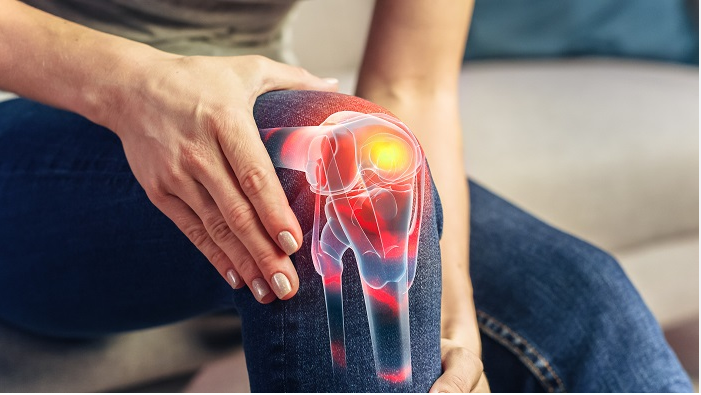Table of Contents
- Introduction to Joint Health
- The Anatomy of Healthy Joints
- Common Joint Problems and Their Causes
- Effective Strategies for Maintaining Joint Health
- Nutrition’s Role in Joint Care
- Exercises to Enhance Joint Stability
- Lifestyle Changes for Joint Longevity
- When to Seek Medical Advice
Introduction to Joint Health
Recognizing the significance of joint health is essential for maintaining an active and rewarding life. Joints are the link between our bones, allowing us to execute fundamental actions such as walking and ascending stairs and engaging in more intricate endeavors like dancing and athletics. Some individuals may need to consider the question, ‘Who’s a Candidate for Total Joint Replacement?‘ As joint issues escalate, maintaining healthy joints should be a preventive priority for everyone. This proactive approach can prevent pain and enable you to keep an active lifestyle well into your later years. The body’s joints bear the brunt of daily activities, impacting how smoothly and painlessly we move. Over time, without proper care, these joints can wear down, leading to discomfort and limited mobility. By fostering solid and flexible joints, you can extend their lifespan, enhance physical capacity, and improve your quality of life, demonstrating that some prevention is superior to extensive treatment.
The Anatomy of Healthy Joints
Joints are complex structures composed of various components, including cartilage, synovial fluid, and ligaments, each playing a crucial role. Cartilage is the cushion that absorbs shock and reduces friction, allowing smooth movement as bones glide over each other. Over time, cartilage can degenerate, particularly if overstressed or injured, which emphasizes the need for its care. Synovial fluid is essential for lubricating joints, acting like oil for a car engine, ensuring that the joint components move smoothly over one another. Ligaments, the rugged, fibrous bands that connect bones within the joint, lend stability and prevent excessive or harmful movements. These elements create a well-oiled machine that allows our bodies to move precisely and efficiently. But like any machine, lack of maintenance can lead to breakdowns.
Common Joint Problems and Their Causes
Joint problems like arthritis and bursitis are prevalent, each presenting distinct challenges. Arthritis, encompassing osteoarthritis and rheumatoid arthritis, is a significant cause of disability worldwide, impacting individuals of every age. Osteoarthritis results from wear and tear, whereas rheumatoid arthritis is an autoimmune disorder that attacks joint linings. Both lead to inflammation and pain. Bursitis is another issue when the bursae—tiny, fluid-filled sacs providing cushioning—become inflamed due to repetitive movements or sudden injury. Understanding the tangible impacts and causes of these joint issues not only aids in early diagnosis but also highlights areas where intervention can mitigate the development of these debilitating conditions. Such knowledge equips individuals with the power to act before the damage becomes irreparable.
Effective Strategies for Maintaining Joint Health
Adopting measures to safeguard your joints and preserve their well-being can have a notable impact. Proper posture can help avoid tension and misalignment, frequently resulting in joint discomfort. Avoiding repetitive stress injuries is also crucial. It involves taking regular breaks from repetitive tasks and using ergonomic tools that minimize strain. These proactive steps allow you to preserve joint function, keeping discomfort and immobility at bay. Every increment of care helps sustain the functionality of these vital body connectors.
Nutrition’s Role in Joint Care
Nutrition plays a foundational role in sustaining joint health and preventing degeneration. Consuming a diet rich in anti-inflammatory foods might lower the chances of developing arthritis. Vitamin D assists in calcium absorption, is essential for bone health, and supports joint integrity. Foods enriched with these nutrients—such as fatty fish, fortified dairy products, and leafy greens—should be staples in your diet. Conscientious eating habits can bolster your joints against future ailments and ensure a foundation for healthier aging.
Exercises to Enhance Joint Stability
Regular exercise is one of the most effective methods of enhancing joint health. Low-impact exercises like swimming, cycling, or yoga improve cardiovascular health and general fitness while reducing joint stress and strengthening the muscles that support them. Strong muscles offer better support for joints, reducing wear and tear on cartilage and ligaments. Integrating these workouts into your regimen can be life-changing. They prompt improvements in joint stability and foster greater flexibility and balance. Simple practices like stretching can prevent stiffness and enhance mobility, making each day more comfortable and active.
Lifestyle Changes for Joint Longevity
Implementing strategic lifestyle changes can profoundly impact joint health and significantly extend joint longevity. Proper hydration is often underestimated yet crucial, as it helps maintain synovial fluid levels that lubricate joints. Investing in an ergonomic workspace can also prevent repetitive stress, which contributes to joint problems over time. Each choice, from your shoes to the precautionary techniques you implement in daily tasks, influences your joint health trajectory. Minor, thoughtful adjustments can pave the way to healthier joints, ensuring these integral movement components serve you well throughout your life.





